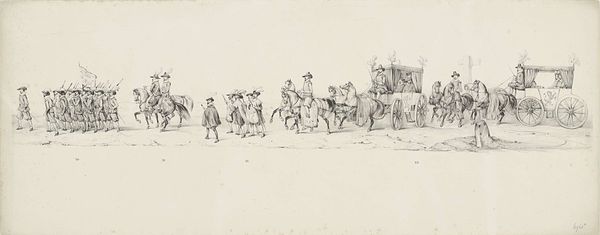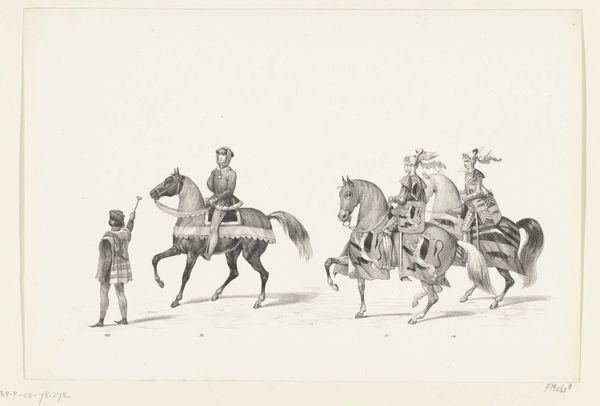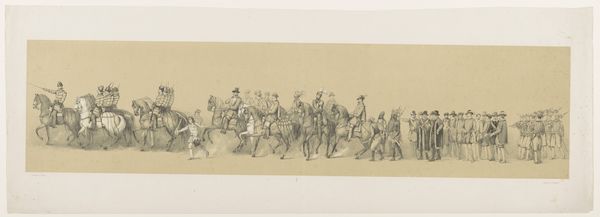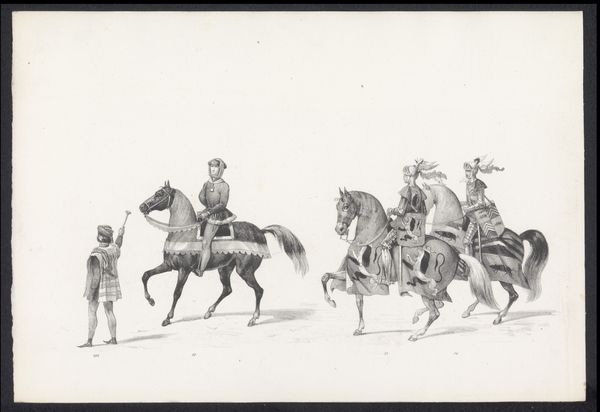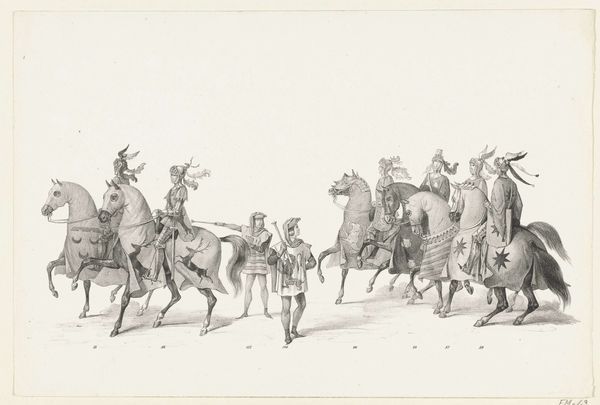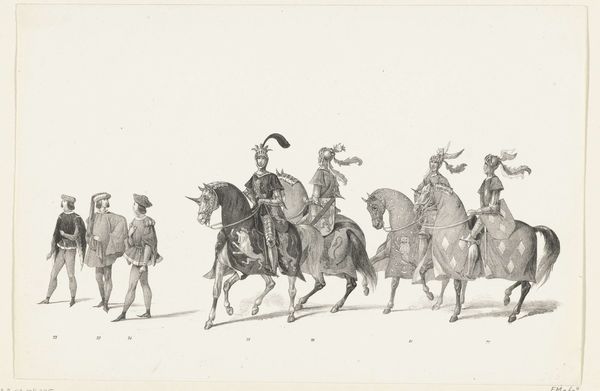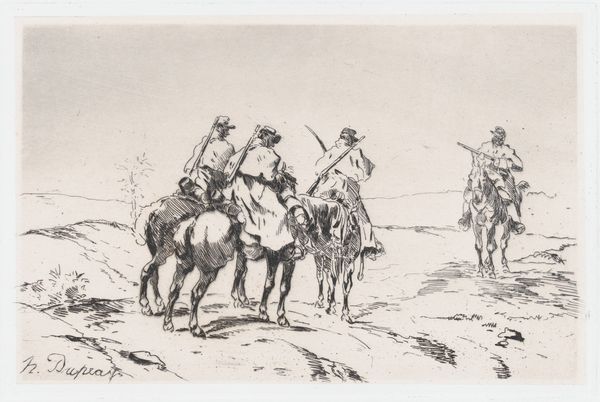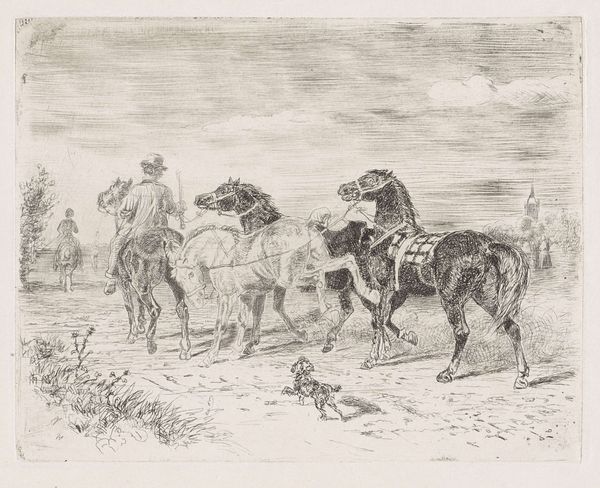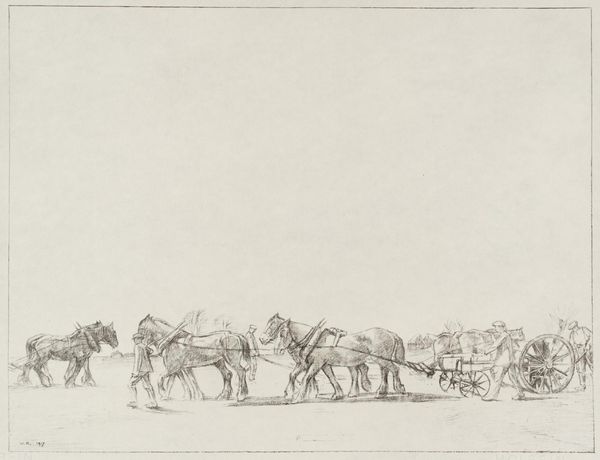
Historische optocht bij het tweede eeuwfeest van de Utrechtse Hogeschool, 1836 (plaat 2) 1837
0:00
0:00
victoradam
Rijksmuseum
drawing, ink, pen
#
drawing
#
light pencil work
#
quirky sketch
#
pen sketch
#
figuration
#
personal sketchbook
#
ink
#
idea generation sketch
#
sketchwork
#
ink drawing experimentation
#
romanticism
#
pen-ink sketch
#
sketchbook drawing
#
pen
#
genre-painting
#
history-painting
#
academic-art
#
sketchbook art
Dimensions: height 240 mm, width 640 mm
Copyright: Rijks Museum: Open Domain
Curator: Oh, I find this quite fascinating. "Historische optocht bij het tweede eeuwfeest van de Utrechtse Hogeschool, 1836 (plaat 2)," or Historical parade at the second centenary of the Utrecht University, 1836 (plate 2). It's an ink and pen drawing created in 1837 by Victor Adam. Editor: It feels... fleeting. Like a dream half-remembered. The light pencil work makes these figures on horseback seem to almost fade into the background. Is that deliberate, a commentary on the ephemeral nature of history itself? Curator: It could be! The artist likely aimed for something timeless and grand. But what resonates with me is the idea of a captured moment – like seeing something incredible from a moving train and trying to etch it in your mind. There’s that sketchbook quality, raw and immediate. Editor: I appreciate that. It's interesting how a piece ostensibly celebrating institutional history carries this fragile, almost melancholic air. Who exactly were these figures? What positions of power did they hold and what's the historical context surrounding academic freedom during the 19th century? That context must inform how we view this parade of privilege. Curator: Those are crucial considerations. The artist might have been intentionally ambiguous, showing a formal procession without getting into specifics to make a statement on tradition itself. I almost wonder if these are supposed to be more allegorical figures, rather than actual portraits. Editor: Perhaps, although there are very strong whiffs of Romanticism about it, maybe in the artist's depiction of authority with an implicit reverence of their importance. Curator: Oh, totally. Maybe this ambiguity creates an interesting tension for us to explore. Is it celebrating this specific history or hinting at something greater or darker at the heart of historical pageantry itself? Editor: It invites a certain reflection on progress too, or what society frames as progress. We must acknowledge this history but we also can't forget how knowledge, throughout history, has also been weaponized. Curator: So true! Perhaps the value here, for me, lies in these fleeting questions, not in answers. What did strike you most profoundly when you first cast eyes upon it? Editor: That sense of something slipping away—the impermanence of spectacle, how easily grand narratives can dissolve into whispers. Thanks to your notes, it encourages reflection. Curator: And to think—it all started with a parade on paper! The beauty of art is its continuous power to open up these windows across time and awareness, it really takes the imagination and the eye working in synergy.
Comments
No comments
Be the first to comment and join the conversation on the ultimate creative platform.

